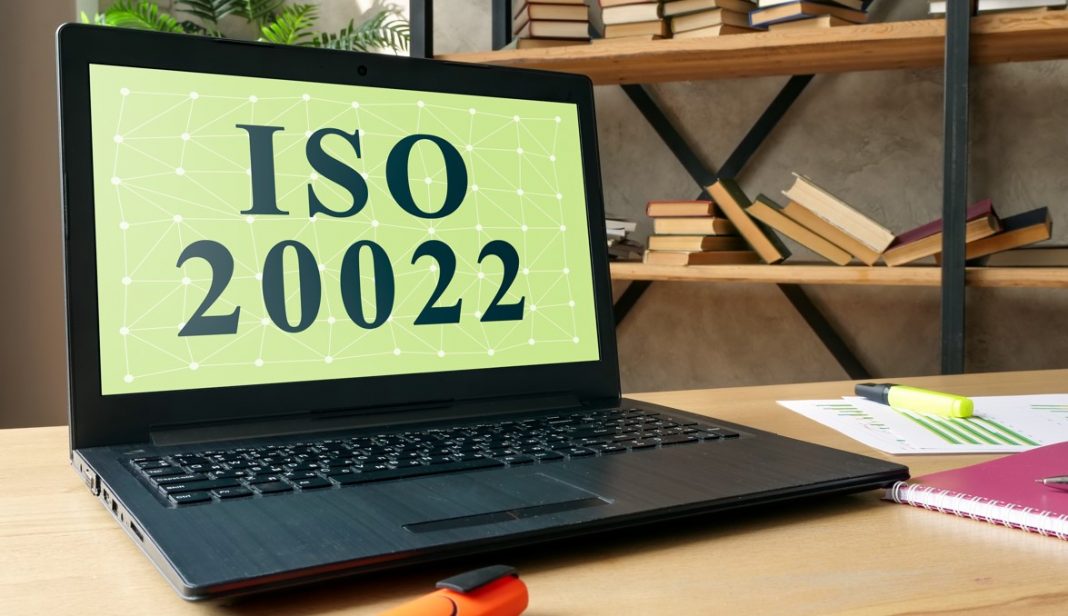The arrival of the new ISO 20022 is set to dawn a new regulatory electronic payments standard for the industry, but some financial institutions are more equipped for its integration than others.
Marcus Treacher, Executive Chairman of RTGS.global, writes for Payment Expert on why traditional banks are having to play catch up to the new standard, and how the payment landscape has rapidly evolved in order for the need of ISO 20022’s introduction in 2025.
ISO 20022 made its debut back in 2004 when it was introduced as a future evolution in global payment standards. Now, with the 2025 deadline just round the corner, it’s close to becoming a reality.
But are banks ready? Or is this change filling them with dread?
The entrance of this new messaging standard between global payments sees the imminent retirement of SWIFT’s MT (message type). A year ago, reports showed that 63% of banks globally would fail to meet the 2025 deadline, so why are so many dragging their heels?
Challenge breeds opportunity, and the transition to ISO 20022 is no exception. It just requires banks to focus on how this market change is set to improve cross-border payments for the better.
What does the market need?
The old MT standard suited the needs of the market at the time of its creation, but it doesn’t hold up against today’s payment landscape. It enables banks to exchange individual structured financial messages, but it is limited.
Then along comes ISO 20022, with its canonical schema. Using a data model that translates between different data formats is a massive improvement on its predecessor as it means financial institutions can exchange value much more smoothly.
Firms are currently battling a rather significant reconciliation problem. After several transactions, all in different formats, they end up with a database of numbers with no references, just the amounts, and is an ongoing headache to sort out.
ISO 20022 makes it all go away. But what does the transition entail?

The ISO 20022 roadmap
Banks have a substantial undertaking to transition to ISO 20022. To grasp the extent of change for banks, consider the complexities and various characteristics that each line of the London Underground network possesses.
You’ve got the newer, cleaner, quicker lines such as the Elizabeth Line or Jubilee Line, which have perspex screens in between the platform and the train. Older lines, such as the Northern Line, however, remain as they were originally built with a much slower, more unpleasant and less safe experience for commuters.
Yet, to renovate all stations in line with the new safety measures, Transport for London would have to commit to years and years of (expensive) work, not to mention managing the estimated 294 million journeys that take place on the Northern Line each year.
This is the challenge that banks face. They all spent a lot of money on their structured, on-premise systems, whereas now, everything is far more agile on the cloud. It’s not simple for them to make a quick change, minor upgrades could easily take up to a year. Not to mention if anything goes wrong, in which case the impact can be far greater, this time with the added risk of damaging the business’ reputation.
So, when faced with pressure to change computing systems or anything remotely operational, it’s not surprising that banks often elect to do nothing.
To make matters more complicated, established banks were not designed to be technology companies, they were designed to be lenders: borrow money, invest money. This is the way banks have been run, and lenders are reluctant to implement any great change.
Challenger banks, on the other hand, don’t face the same extent of this problem and are better able to bring new innovations to market from the ground up. Armed with greater agility, these newcomers are also ready for the sharp regulatory twists and turns that the payments market is susceptible to. They are the Elizabeth Line in this continued analogy.
However, for banks, we’ve arrived at a market transition that cannot be ignored. The ISO 20022 deadline is approaching, and banks need to respond to the change.

How banks have changed
In the past, banks have held enough weight as a group to influence industry decisions that may impact them. Generally, governments have left them alone.
It’s been this way for a long time for a very good reason. Before the financial crisis in 2008, there was a widespread agreement to upgrade. Banks would have invested million pounds each to all upgrade their messaging. Then the markets crashed, banks became too risk averse to spend money on infrastructure upgrades, overseers elected to give them a break so the whole project was put on ice.
However, banks are now gradually upgrading, and ISO 20022 is becoming more prevalent in the industry, especially amongst new and scaling fintechs.
Previously, the only thing that big banks have had to protect themselves in an increasingly competitive market, is the enormous amounts of money they sit on, which means they’ve been able to weather the big storms over the years. But ultimately, they cannot keep playing this game.
A competitive market
ISO 20022 uses a message type called XML, or Extended Markup Language. 15 years ago, people were thinking in terms of computers sending messages to each other – almost like a written language. This is how banks have been operating for years.
What’s happened since then however, is that computing systems have become much more tightly coupled together across different organisations. With programs running independently in the cloud, information exchanges between them have become far more interactive, changing from messaging to APIs.
In this way, millions of programs all around the world are no longer sending messages to each other, but instead are now directly talking to each other – and ISO 20022 is the lingua franca for this new spoken computing world. This shift in usage makes upgrading to ISO 20022 even more critical.
And where banks are now starting to upgrade their ageing messaging systems to ISO 20022, fast-growth fintechs have already moved on, and have now defined a spoken language between computer programs using ISO 20022.
There’s no denying it, newer institutions are in a far stronger position to respond to changing ISO standards like 20022, simply because they are not weighed down by established processes woven directly into their foundations.
However, the opportunity that ISO 20022 poses to banks from an efficiency, cost, resilience, and compliance standpoint should be enough to fuel the drive to change amongst even the most established of institutions.

Embrace change for the better
Change on this scale can be intimidating. Preparing for the ISO 20022 2025 deadline requires more work for some banks – it isn’t just a surface fix, rather major changes to the banks’ “plumbing”.
However, it’s vital that we don’t shy away from change. The global economy is in desperate need of smoother payment foundations – and the financial industry is perfectly positioned to help. The boldest and most agile in the industry will be the ones driving genuine change and shaping the market of the future.
So, it’s up to these institutions whether they’re prepared to embrace the change and step forward as a market leader, or watch their competitors fly past them.























